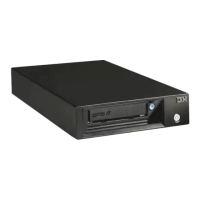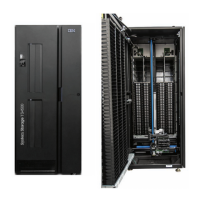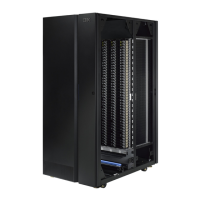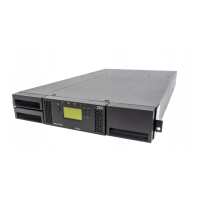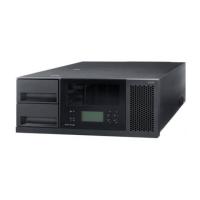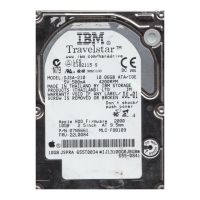board.
FLASH EEPROM
An electrically erasable programmable read-only memory (EEPROM) that can be updated.
FMR
Field microcode replacement.
format
The arrangement or layout of data on a data medium.
formatter
Part of a magnetic tape subsystem that performs data conversion, speed matching, encoding, first level error recovery, and interfaces to one or more tape drives.
FP
File protect.
frayed
Damaged as if by an abrasive substance.
FRU
Field replaceable unit.
FSC
Fault symptom code.
FSI
Fault symptom index.
FTSS
Field Technical Sales Support.
functional microcode
Microcode that is resident in the machine during normal customer operation.
G
g
Gram.
GB
gigabyte.
GBIC
Gigabit Interface Converter.
Gbs
gigabits/second
Gbi
gigabit
gigabit (Gbit)
1000000000 bits.
gigabyte (GB)
1000000000 bytes.
Gigabit Interface Converter (GBIC)
Converts copper interface to optic interface.
gnd
Ground.
H
HBA
Host Bus Adapter.
HD Slot Technology
High-density (HD) slot technology. Allows multiple cartridges to be stored in a tiered architecture.
hertz (Hz)
Unit of frequency. 1 hertz equals one cycle per second.
hex
Hexadecimal.
High Voltage Differential (HVD)
A logic signaling system that enables data communication between a supported host and the library. HVD signaling uses a paired plus and minus signal level to
reduce the effects of noise on the SCSI bus. Any noise that is injected into the signal is present in both a plus and minus state, and is canceled. Synonymous with
differential.
HVD
SCSI Bus High Voltage Differential
Hz
Hertz (cycles per second).
I
IBM Ultrium Tape Drive
Located within the library, a data-storage device that controls the movement of the magnetic tape in an IBM LTO Ultrium Tape Cartridge. The drive houses the
mechanism (drive head) that reads and writes data to the tape.
ID
Identifier.
identifier (ID)
(1) In programming languages, a lexical unit that names a language object; for example, the names of variables, arrays, records, labels, or procedures. An identifier
usually consists of a letter optionally followed by letters, digits, or other characters. (2) One or more characters that are used to identify or name data element and
possibly to indicate certain properties of that data element. (3) A sequence of bits or characters that identifies a program, device, or system to another program,
device, or system.
IEC
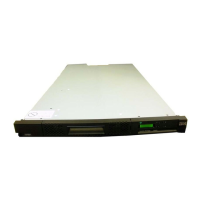
